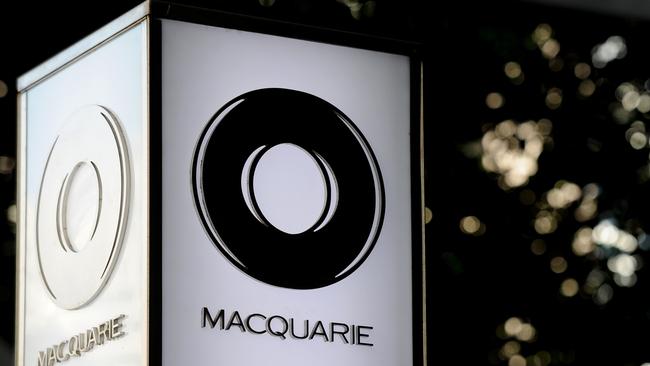
The onus also rests with the Australian Securities & Investments Commission to lobby government for tougher potential penalties to provide a stronger deterrent to institutions that ignore the rules.
The Markets Disciplinary Panel hit Macquarie with a $4.99m penalty last week, warning the bank had failed to prevent at least three clients from attempting to manipulate energy market futures contracts through at least 51 bids at the very end of trading days.
The Markets Disciplinary Panel, made up of industry practitioners, is an efficient way for ASIC to seek penalties against banks and stockbrokers for poor market conduct.
Generally the panel works well at dolling out judgments and, where relevant, fines. That means lengthy court action is avoided and people with deep industry knowledge can rule on (often technical) breaches of market rules.
While the panel works well within the confines of the legislation, this columnist believes tougher maximum fines are required for larger companies like Macquarie, when the behaviour of the firm is found wanting.
In Macquarie’s case there were multiple warnings from ASIC about three of its customers attempting to game the market, but as the panel observed, the bank “failed to adequately react”.
The suspect trades were executed in the final minutes of trading days, resulting in a benefit for clients exceeding $4.2m. The benefit to Macquarie was much smaller, but the company was slow to address issues and also blamed its Nasdaq/SMARTS surveillance system for failing to trigger alerts.
In this instance, there were plenty of opportunities for Macquarie to address and rectify the issue in a timely manner, but it failed to do so.
While the penalty issued by the panel tars Macquarie’s reputation – marking another regulatory blunder by the company – the quantum is laughable.
For the main contravening behaviour, the maximum penalty that the panel could have imposed on Macquarie is about $10m.
The company made a 2024 annual profit of $3.52bn, meaning the penalty is tiny.
It may have proved a better option for ASIC to impose an enforceable undertaking on Macquarie to ensure it rectified the issues, given they are often measured by an independent third party.
Macquarie has had a patchy compliance record of late. In 2021 it was forced by the prudential regulator to hold an additional $500m in capital due to compliance failings, including material breaches of prudential and reporting standards. That same year it was also the subject of another penalty issued by the Markets Disciplinary Panel.
In the US, Macquarie is defending class actions over allegations it profiteered from a freak 2021 winter storm.
And earlier this month, Macquarie’s investment management arm agreed to pay the US Securities and Exchange Commission $US79.8m to settle charges for overvaluing about 4900 largely illiquid collateralised mortgage obligations.
Macquarie’s board and management should be alert to the host of compliance blunders at the firm in recent years and rein in poor and lax behaviour. Historically, Macquarie has been known for having a strong risk management culture, but these constant lapses could lead to a bigger issue if not properly addressed.
This column understands more than one Macquarie employee has left the company in light of the energy market compliance issues that the panel considered. Additionally, there have been other consequences, including employee remuneration.
ASIC must also track down the customers that tried to manipulate the market and take appropriate action there too.
While the Markets Disciplinary Panel is able to take into account Macquarie’s size in applying a penalty, perhaps policymakers need to impose a tiered structure, where a bigger firm’s overall income is assessed in working out a fine. For some small stockbroking firms $5m is enough to threaten the viability of their business, but for Macquarie it’s not even a slap on the wrist.
The potential penalties in this area were markedly increased from a very low base in 2019, via the Treasury Laws Amendment (Strengthening Corporate and Financial Sector Penalties) Act.
Before changes in that year, the penalties available were typically 60 per cent of the maximum penalty specified in a rule, being that percentage of $1m, $100,000 or $20,000.
After five years in operation, it’s time for the penalties to be reassessed and overhauled if large firms are to take any notice. The current penalties are indexed, but that doesn’t really provide a meaningful increase in fines that makes the big firms sit up and take notice.
Running the rule
Insignia, formerly IOOF, is being closely monitored by a string of private equity players who are running the numbers on a potential tilt at the listed wealth company.
Among them are global investment giant Brookfield – which has $US1 trillion ($1.45 trillion) of assets under management.
Brookfield has been busy on the deal front in Australia in recent years.
The asset manager last month acquired a 50 per cent stake in accommodation platform Journal Student Living.
The investment firm was rebuffed on a joint bid for Origin Energy last year but did lead a group in buying a majority stake in Neoen, Australia’s largest renewable energy operator.
In 2022, Brookfield acquired lender La Trobe Financial in a $1.5bn transaction, while in 2019 it snapped up hospital group Healthscope.
While Brookfield hasn’t made a formal or binding approach, the firm has certainly undertaken detailed analysis for a potential bid for Insignia.
Sources have told this column part of the rationale centred on Brookfield weighing a potential combination of La Trobe and Insignia. While it sounds like an odd pairing – particularly given Insignia houses MLC, which was offloaded by National Australia Bank – it all has to do with La Trobe’s portfolio of assets.
While La Trobe is a non-bank lender, it also oversees fixed-income credit funds for thousands of retail investors largely in residential property-backed loans. The company’s website points to $11bn being housed in La Trobe’s Australian credit fund and it has $20bn in assets under management. Brookfield has looked at broadening La Trobe’s credit fund into other areas of the wealth market and considers a purchase of Insignia as one way of accelerating that plan.
It is unclear how developed Brookfield’s plan is, and the suitor may be waiting for Insignia’s investor day in November to decide how, or if, to proceed. The firm may also be waiting for any future softness in the potential target’s share price to pounce.
Brookfield and Insignia declined to comment.
Insignia’s shares have climbed almost 12 per cent so far this year, giving the company a market capitalisation of $1.76bn.
Singapore anniversary
ANZ chief executive Shayne Elliott and several members of the bank’s board will mark the bank’s 50th anniversary of operating in Singapore this week. Chairman Paul O’Sullivan was unable to attend the events in Singapore, but several non-executive directors are making the trip.
ANZ employs about 760 staff in Singapore, meaning it is the bank’s largest market on that measure outside Australia and New Zealand.
Unlike its major bank rivals, Asia remains relevant to ANZ’s operations. Despite retreating from small business and commercial banking and selling its retail and wealth operations in Asia, ANZ still has a presence in 29 international markets, 13 of which are in Asia.
Casting a shadow over this week’s ANZ anniversary events is, however, the corporate regulator’s investigation into the bank’s management of a $14bn Australian government bond issuance last year.
The Australian Securities & Investments Commission is probing irregular trading and price activity in the government bond and futures market relating to the 2023 bond issuance.
ANZ, Westpac and NAB rule off their respective financial years on September 30.




The federal government must reassess the level of fines levied on banks when their action or inaction affects the integrity of financial markets, particularly in light of Macquarie Group being hit with a trivial $5m penalty.